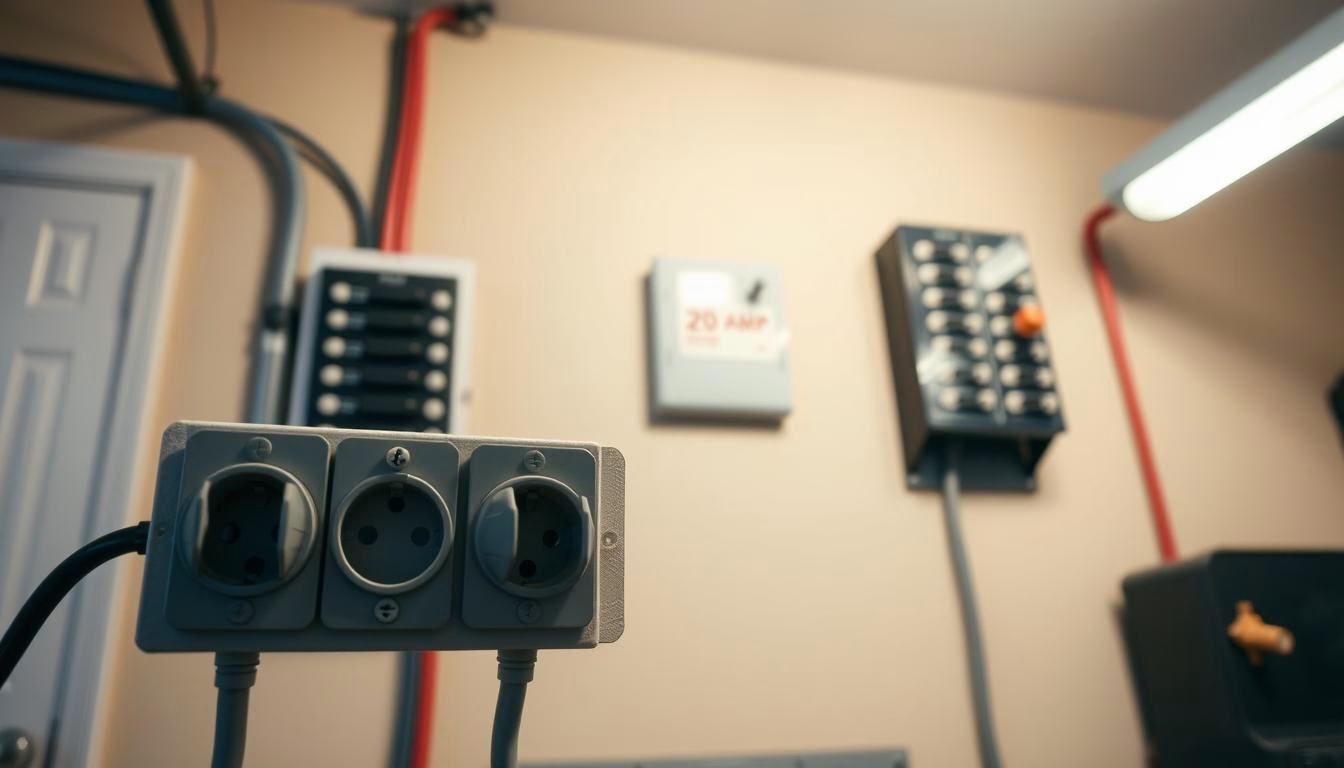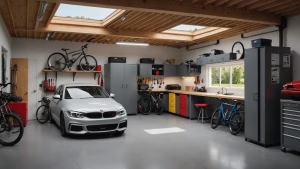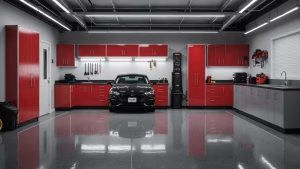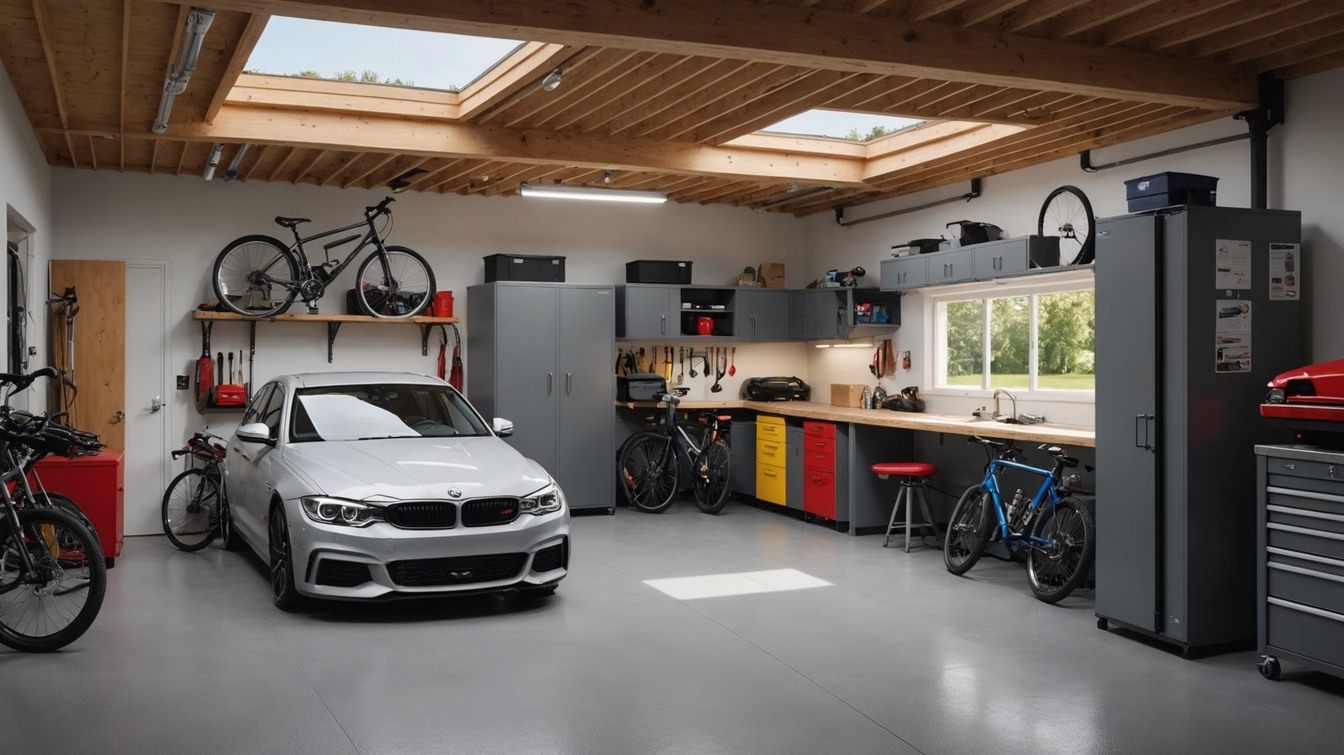This quick intro gives a friendly rule of thumb and the safety basics you need when planning receptacles for your home workspace.
A 20‑amp, 120‑volt feed can deliver 2,400 watts theory, and the National Electrical Code commonly uses an 80% guideline for safe continuous load. That yields about 1,920 watts of practical capacity.
Electricians often plan about 1.5 amps (roughly 180 watts) per general-use device. Dividing 1,920 watts by 180 watts suggests roughly ten receptacles is a reasonable planning number for many homes.
Remember, the NEC sets performance rules, not a fixed count. Garage rules require at least one dedicated 120V, 20‑amp branch for receptacles per vehicle bay, GFCI protection, and 12‑gauge wiring for that branch. Watch for overload signs — trips, warmth, buzzing, or odors — and stop adding load if they appear.
Next, we’ll show a quick answer for planning, a step‑by‑step load check you can do, and key code points to keep your setup safe and compliant.
Quick answer: Typical outlet limits on a 20-amp garage circuit
A simple rule of thumb: plan roughly ten general-purpose outlets on one 20-amp circuit for many home garages. That gives a practical ceiling without inviting frequent trips.
Here’s the plain math: 20 amps at 120 volts equals 2,400 watts. Using the 80% safe operating load reduces that to about 1,920 watts. If you budget roughly 180 watts (about 1.5 amps per) for each device, the math yields roughly 10 receptacles.
This is a planning limit, not a code-mandated cap. The NEC requires capacity to match expected load but does not list a fixed number of receptacles. Electricians use this guideline and then adjust for the types of devices you’ll plug in.
Remember: high-watt devices like a 1,500-watt space heater can use most of the available power. Lighting and power tools also count toward the total load. If you expect several heavy loads at the same time, add a second 20-amp circuit or reduce the number of outlets per branch.
How many outlets on a 20 amp circuit in a garage: step-by-step calculation
To size receptacles, first translate breaker amperage into total watt capacity. Use the formula: amps × volts = watts. For a 20‑amp branch at 120 volts that equals 2,400 watts.
Apply the 80% rule for continuous or practical planning: 0.8 × 2,400 W = 1,920 W safe operating load. Convert that safe watts into a practical number by estimating per-device draw.
If you budget about 1.5 amps (≈180 watts) per outlet, then 1,920 W ÷ 180 W ≈ 10.67, so plan for 10 outlets. Adjust the assumption for your actual devices: chargers and LEDs draw much less than compressors or space heaters.
Include lighting or other loads on the same line when you total the load. Use 12‑gauge copper conductors for a 20‑amp circuit and never mix 14‑gauge wire. The NEC sets performance expectations, not a fixed receptacle count, so document device wattage and revise the plan if the electrical system shows stress.
Garage code essentials in the United States you must know before wiring
Before you pull wire or mount boxes, know the key code requirements that protect people and equipment in garage work areas.
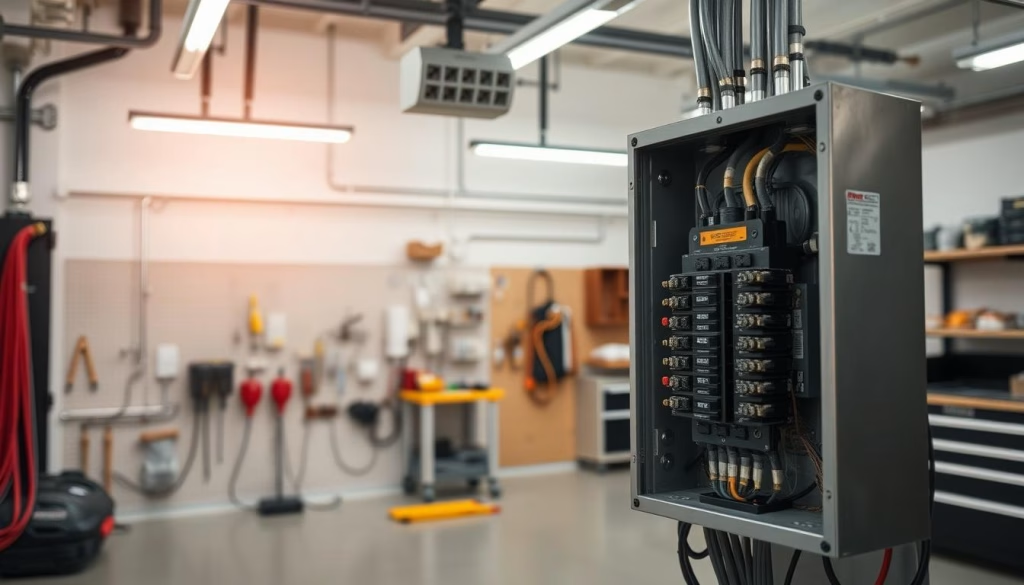
The NEC requires at least one dedicated 120V, 20‑amp branch serving garage receptacle outlets, with one required receptacle in each vehicle bay. Those required receptacles cannot sit higher than 5.5 feet above the floor so they stay reachable near parked vehicles.
All garage outlets must have GFCI protection to lower shock risk around concrete and moisture. After the required branch is installed, you may add extra 15‑amp or 20‑amp circuits and additional outlets as needed, provided installation follows local code and manufacturer instructions.
Using 12‑gauge conductors for 20‑amp runs is mandatory; do not mix 14‑gauge on that breaker. You can feed lighting and receptacles from the same line, but note that a trip will darken the whole area and stop power to equipment at once.
Treat the NEC as a baseline. Local amendments may be stricter, so consult your authority having jurisdiction or licensed electricians before finalizing plans.
Choosing the right outlet and breaker types for a safe, convenient setup
Select the right receptacles and breakers to keep tools running and your workspace safe. Use 20-amp outlets (they show a T‑shaped slot) for heavier devices and shop tools. Install those outlets only on a matching 20-amp circuit with 12‑gauge wiring.
Standard 15-amp outlets work fine for low-load chargers, lights, and small devices when several outlets share the run. They are commonly used on a 20-amp branch provided the run has multiple receptacles.
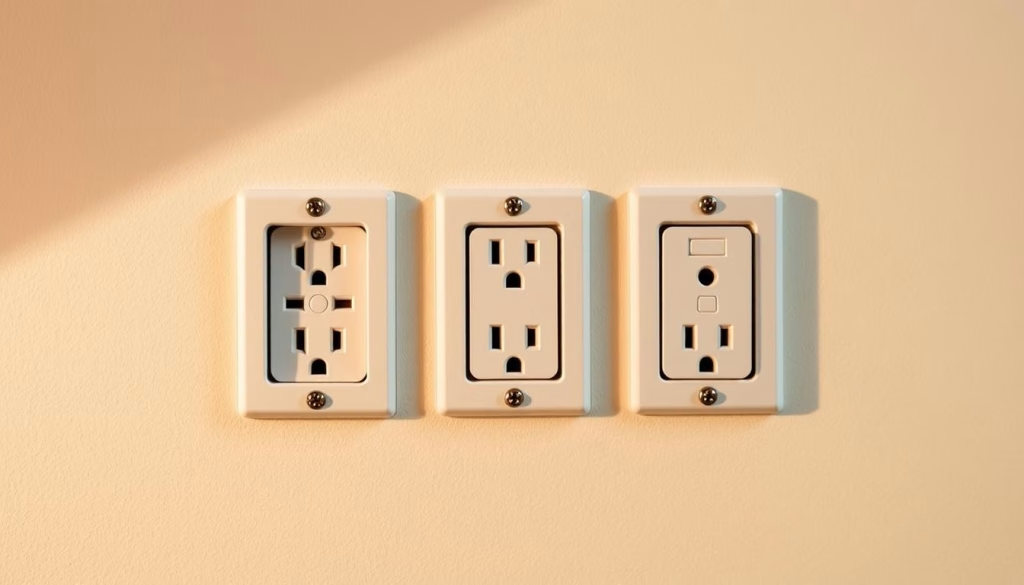
Protect the line with GFCI protection; choose a GFCI outlet at the first box or a GFCI breaker to cover all downstream outlets. Consider AFCI protection if local code asks for it or if wiring paths enter living spaces.
Pick tamper-resistant models for safety and add USB or smart outlets for convenience. Avoid back-stab connections: wirenut and pigtail conductors to the device screws for a durable term connection.
Right-size breakers instead of oversizing to hide trips. Plan outlet number and placement so cords don’t cross work areas, and consult a licensed electrician when in doubt about compatibility with your home electrical system.
Plan your garage circuit load, layout, and upgrades to avoid overloading
Start by mapping every tool, light, and charger you expect to run at the same time; real loads beat rules of thumb.
Use the 1,920-watt safe load as your planning target and add up each device wattage. Include overhead and task lighting if they share the same line so you don’t lose margin unexpectedly.
Place outlets near work zones and major equipment to avoid long cords and daisy chains. Put home office gear on its own dedicated branch when possible to keep computers and printers from competing with shop tools.
Watch for signs you’ve outgrown the branch: frequent trips, warm plates, buzzing, discoloration, or tools that struggle to start. These are clear indicators to reduce load or add another circuit.
Choose durable protection and wiring practices: use 12-gauge wiring, wirenut splices and pigtails, and consider GFCI breakers for wall plugs. Label breakers and receptacle locations, and get site-specific advice from a licensed electrician before any major improvement.
Conclusion
Finish by verifying device wattage, protective devices, and wiring so your plan matches real use and safety needs.
Use the simple planning number — about ten outlets for one 20-amp circuit in a typical garage — as a starting point. Follow code minimums: one dedicated branch per bay, GFCI protection, and 12‑gauge conductors. These steps cut risk and keep power steady for tools and lighting.
Keep good wiring practice: solid pigtails, quality terminations, and never upsize a breaker to hide trips. If you smell burning, see warm plates, or breakers trip often, reduce load or call an electrician. Local electricians can assess your site and future-proof homes with extra branches when needed.
Plan by actual loads, respect the 80% guideline, and prioritize safety to avoid unnecessary risk and rework.
PLEASE READ: This article is for informational purposes only and may have errors. We recommend that you hire a licensed professional to do any type of electrical work in your garage and seek professional advice.

